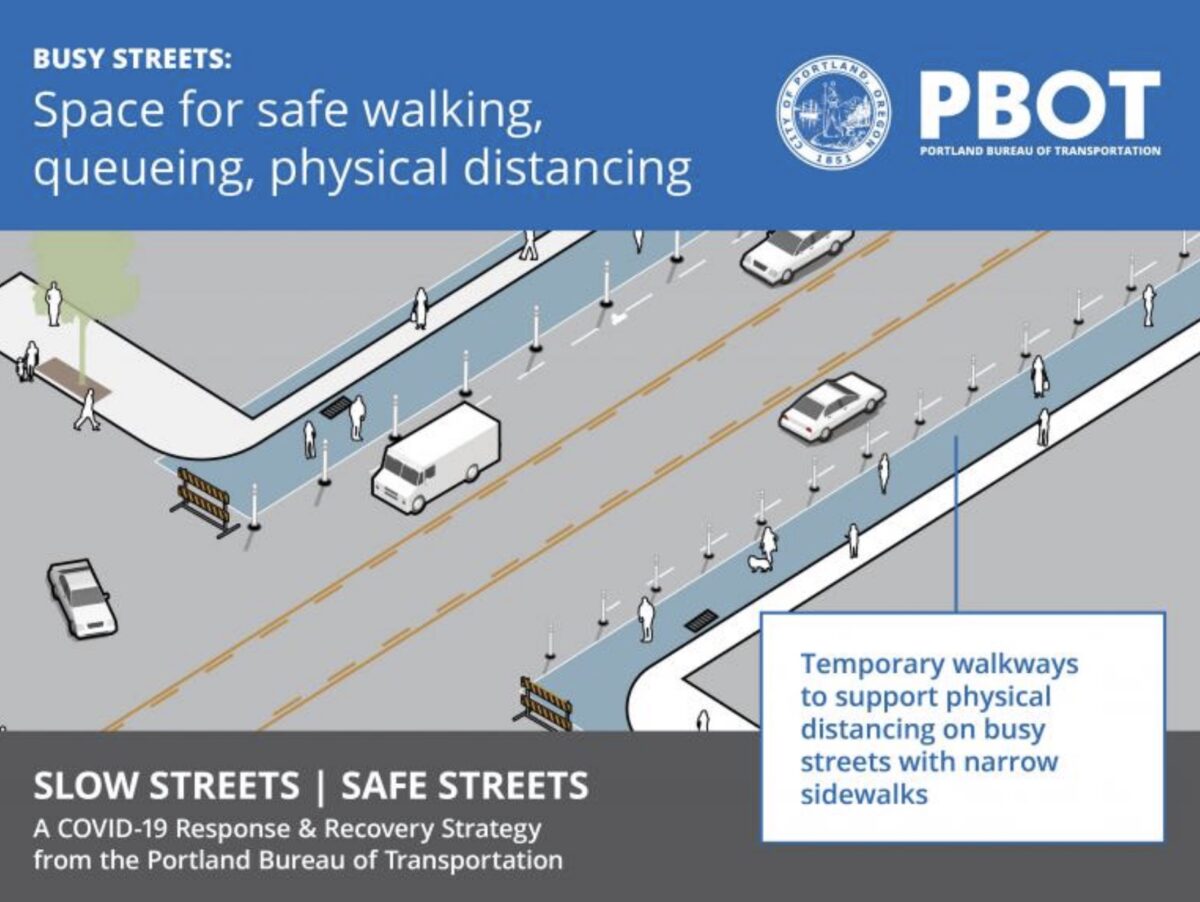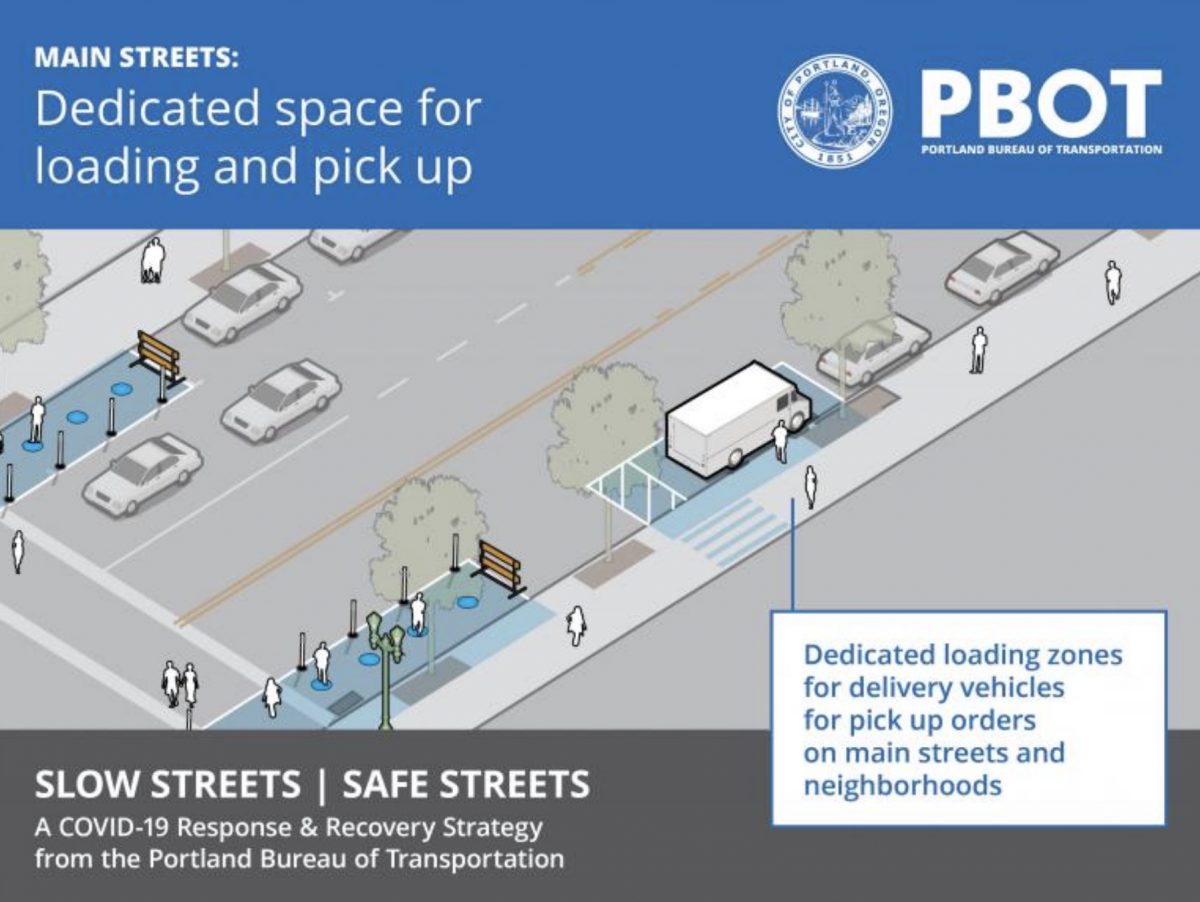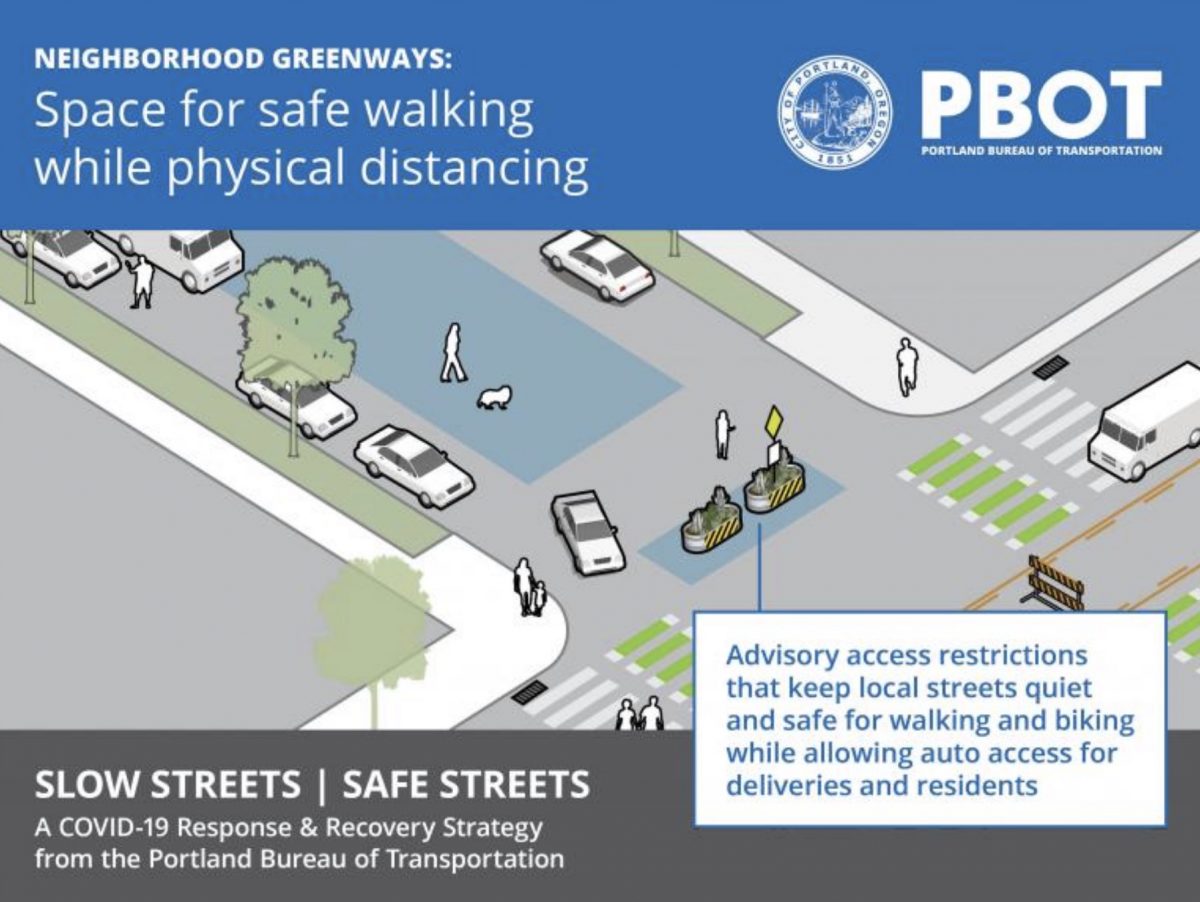
The Portland Bureau of Transportation has revealed a plan to adapt our streets to the COVID-19 crisis.
“The new strategy will repurpose streets, including closing them to car traffic, to make it easier and safer for Portlanders to practice physical distancing as the city recovers,” reads a statement just released by PBOT by way of Commissioner Chloe Eudaly.
Here’s the full announcement:
“After weeks of bureau analysis and community outreach, the initiative maps how PBOT will reconfigure streets—including closing them to through car traffic—to support physical distancing, address increased movement, and support the City of Portland’s re-opening process.
“Right now, the best thing Portlanders can do for the health of our community is to continue to stay home to save lives. PBOT is carefully considering how transportation behavior has changed and how it needs to change, not just as we recover from this crisis, but to support a sustainable future,” said Transportation Commissioner Chloe Eudaly. “Our Slow Streets|Safe Streets Initiative will provide the space Portlanders need to move around our city safely, and improve how we share our right of way. I am proud of PBOT’s leadership on this issue. We have been responsive to community advocates and business concerns while balancing the vital need to prioritize public health and vulnerable Portlanders. Our streets belong to all of us, and these improvements will allow us to safely walk, bike, and roll through the city.”
PBOT is proposing a series of steps and measured improvements for neighborhood greenways, busy streets, and business districts. The bureau will focus its initial efforts on areas of the city with the most pressing safety needs.
These planned steps include:


1. Neighborhood Greenways: (quiet residential streets): During the public health emergency, neighborhood greenways have emerged as a critical space for Portlanders seeking to get out and about safely near their homes. The 100 miles of greenways throughout Portland are specifically designed to prioritize safety and comfort for people walking and biking. These streets have provided a safe space for Portlanders to walk, bike, and roll while maintaining physical distancing.
One of the first steps the bureau will take as part of the initiative will be to install temporary barricades, to either close certain streets to all but local traffic, or slow traffic where a full closure is not feasible. The bureau will also install signage to alert drivers to the presence and priority of people walking and biking on the greenways.
2. Busy Streets: Expand pedestrian space along streets that are narrow or missing sidewalks to improve safety. Provide more room for physical distancing at intersections with high foot traffic. Install pop-up walking and biking lanes to encourage local trips on foot or by bike.
3. Business districts: reserve space so customers can line up while maintaining appropriate physical distancing; create dedicated loading zones for pickup and delivery.
During the pandemic, Portland has experienced dramatic changes to the city’s transportation system.
There has been a significant decrease in traffic and congestion. Across the city, car trips have been down almost 50 percent. According to data from the traffic app Waze, the number of traffic jams has fallen by 88 percent. At the same time, incidents of speeding have risen almost a third since the start of the public health emergency.
Finally, more Portlanders have been using neighborhood streets—including the city’s network of neighborhood greenways—to exercise and get fresh air while practicing safe physical distancing.
“When we reach the point that we can re-open, we want to make sure our transportation system is ready,” said Director Chris Warner. “Portlanders have made great use of their neighborhood streets to walk, bike, and roll during the pandemic. We’ve designed the Slow Streets|Safe Streets initiative to make sure they can continue to do this safely as we get back closer to normal.”
In the coming weeks, PBOT will hold a series of digital meetings with community, business, and neighborhood groups to collect input on how our streets can best serve all Portlanders both during and after this public health crisis. If members of the public have suggestions for locations where street improvements could support safe physical distancing, please contact PBOT at 503-823-SAFE or email: active.transportation@Portlandoregon.gov. Planning and preparation is underway for these actions, and the Slow Streets|Safe Streets initiative will begin to launch immediately with additional phases timed to launch when the Governor’s Office and public health officials officially start the re-opening process.
PBOT and Commissioner Eudaly have been under intense pressure for weeks to make a move like this. Just one week ago Commissioner Eudaly told an Oregon Public Broadcasting radio show host: “I don’t think that right now while we’re under ‘Stay at Home stay safe’ orders, that encouraging people to leave their homes and making radical changes with the way streets are used, are the best use of our time and resources. And I’m also very concerned about public safety.”
A PBOT planner will share more details of their plans at a meeting of the city’s Bicycle Advisory Committee which is open to the public and will be held via Zoom tonight at 6:00 pm.
— Jonathan Maus: (503) 706-8804, @jonathan_maus on Twitter and jonathan@bikeportland.org
— Get our headlines delivered to your inbox.
— Support this independent community media outlet with a one-time contribution or monthly subscription.
